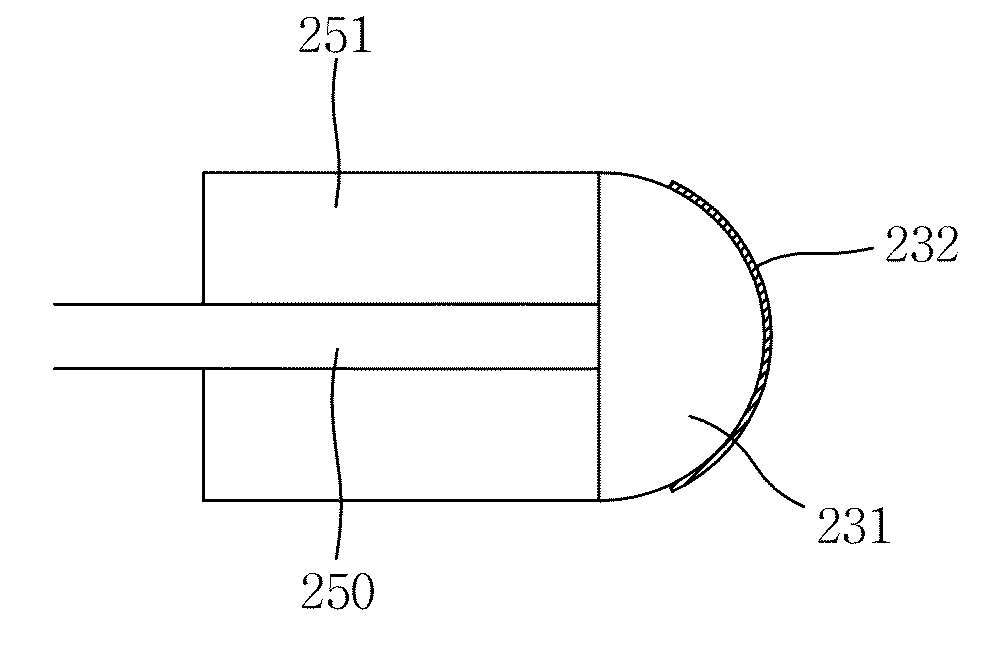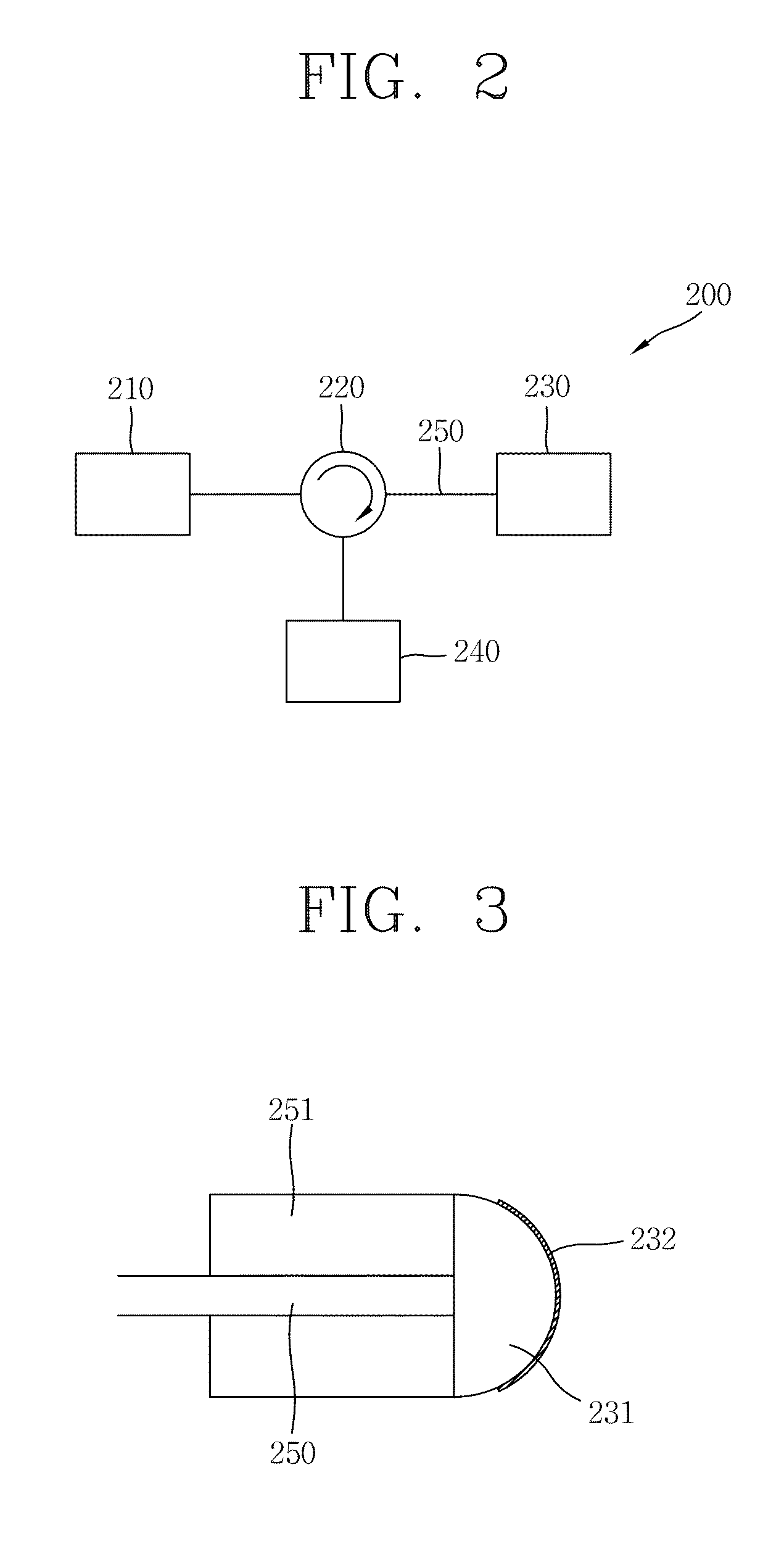Fiber optic apparatus for oxygen sensing
a fiber optic apparatus and oxygen sensing technology, applied in the direction of optical radiation measurement, instruments, spectrometry/spectrophotometry/monochromators, etc., can solve the problems of short reaction time of commercial oxygen sensors, short reaction time of oxygen sensors, etc., to achieve fast sensing time, rapid reaction time, and easy application
- Summary
- Abstract
- Description
- Claims
- Application Information
AI Technical Summary
Benefits of technology
Problems solved by technology
Method used
Image
Examples
Embodiment Construction
[0032]Unless differently defined, all the terms used herein with including technical or scientific terms have the same meaning as terms generally understood by those skilled in the art relating to the field of the present invention. Terms defined in a general dictionary should be understood so as to have the same meanings as contextual meanings of the related art. Unless definitely defined in the present invention, the terms are not interpreted as ideal or excessively formal meanings. Furthermore, when the technical terms used in the present invention are unsuitable technical terms that do not precisely express the techniques of the present invention, the unsuitable technical terms should be replaced by suitable technical terms that can be understood by those skilled in the art. The general terms used in the present invention should be interpreted based on the previous or next contexts, but should not be interpreted as an excessively narrowed meaning.
[0033]A singular expression incl...
PUM
 Login to View More
Login to View More Abstract
Description
Claims
Application Information
 Login to View More
Login to View More - R&D
- Intellectual Property
- Life Sciences
- Materials
- Tech Scout
- Unparalleled Data Quality
- Higher Quality Content
- 60% Fewer Hallucinations
Browse by: Latest US Patents, China's latest patents, Technical Efficacy Thesaurus, Application Domain, Technology Topic, Popular Technical Reports.
© 2025 PatSnap. All rights reserved.Legal|Privacy policy|Modern Slavery Act Transparency Statement|Sitemap|About US| Contact US: help@patsnap.com



